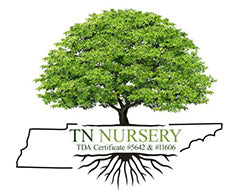Fern Variety
Exploring the Beauty and Diversity of These Plants in Gardening In the verdant gardening world, few plants evoke the serene beauty of nature quite like ferns. With their delicate fronds unfurling in graceful arcs, ferns add a touch of elegance and tranquility to any garden or indoor space. What makes them particularly captivating is their incredible diversity; from the lush, tropical foliage of the Bird's Nest Fern to the airy, feathery fronds of the Maidenhair Fern, there's a variety to suit every taste and environment.
Understanding Ferns: They belong to the Pteridophytes group, characterized by their vascular systems and reproductive structures and called sporangia. Unlike flowering plants, they reproduce via spores rather than seeds. Their life cycle typically involves two distinct stages: the sporophyte, which is the familiar fern plant we see, and the gametophyte, a smaller, less conspicuous stage that produces reproductive cells.
When selecting these varieties for your garden, there are numerous factors to consider, including climate, light conditions, soil type, and available space. Some plants thrive in shady, moist environments, while others can tolerate more sunlight and drier conditions. By understanding the specific requirements of different plant species, you can create an ideal growing environment and ensure their long-term health and vitality.
Popular Varieties: Boston Fern (Nephrolepis exaltata): Renowned for its lush, arching fronds, it is a classic choice for hanging baskets and shaded garden beds. Thrive. Maidenhair Fern (Adiantum spp.): Its delicate, fan-shaped fronds and black wiry stems exude a sense of timeless beauty. It prefers filtered light and high humidity, making it an excellent choice for bathrooms or terrariums.
Japanese Painted Fern (Athyrium niponicum): Characterized by its striking silver-green fronds with purple accents, the Japanese Painted Fern adds a touch of color and texture to shaded garden areas. It prefers moist, well-draining soil and dappled sunlight.
Cinnamon Fern (Osmundastrum cinnamomeum): Named for the cinnamon-colored spore-bearing structures that emerge in spring, the Cinnamon Fern is a hardy native species ideal for woodland gardens and wetland edges. It thrives in moist, acidic soil and partial shade.
Sword Fern (Nephrolepis cordifolia): Recognizable by its upright, sword-shaped fronds, it is prized for its resilience and easy-care nature. It can tolerate many light conditions, from full shade to partial sun, and prefers consistently moist soil.
Lady Fern (Athyrium filix-femina): Graceful and airy, the Lady Fern is beloved for its finely divided fronds and soft, feathery appearance. It prefers full shade and moist, well-draining soil, making it a popular choice for woodland gardens.
Planting and Care Tips: Proper planting and care are essential for their success regardless of your varieties. Here are some general tips to help you cultivate healthy, thriving ferns:
Site Selection: Choose a location with the appropriate light and moisture levels for these species. Most plants prefer filtered light or shade and moist, well-draining soil.
Fern Variety Soil Preparation:
Amend heavy clay soils with organic matter to improve drainage and fertility. Avoid excessively dry or saturated soils, which can lead to root rot.
Planting Technique: When planting these plants, dig a hole slightly larger than the root ball at the same depth it was in the container. After planting, fill the hole generously with soil and water to help the roots settle in their place. Watering: It is essential to maintain the moisture level of the soil.
However, overwatering can lead to waterlogging and plant damage. Therefore, it is recommended to keep the soil consistently moist but avoid making it too soggy. It is essential to maintain the soil's moisture level. However, overwatering can lead to waterlogging and damage to plants.
Therefore, keeping the soil consistently moist is recommended but avoiding making it too soggy. Especially during the ferns' active growing season. Water deeply to encourage healthy root development and mulch around the base of the plants. Fertilization: While ferns are not heavy feeders, you can apply a balanced, slow-release fertilizer in spring to promote healthy growth. Avoid high-nitrogen fertilizers, as these can encourage lush foliage at the expense of frond quality.
Fern Variety Pruning and Maintenance:
Regularly remove dead or yellow fronds for a tidy look and new growth. Divide overcrowded clumps every few years to rejuvenate the plants and prevent overcrowding. You can enjoy these ancient plants' timeless beauty and enchanting allure in your garden or indoor spaces by selecting suitable varieties and providing them with the proper care and growing conditions.
Whether seeking a lush, tropical oasis or a serene woodland retreat, they offer endless possibilities for creating captivating landscapes that connect us to the natural world.











